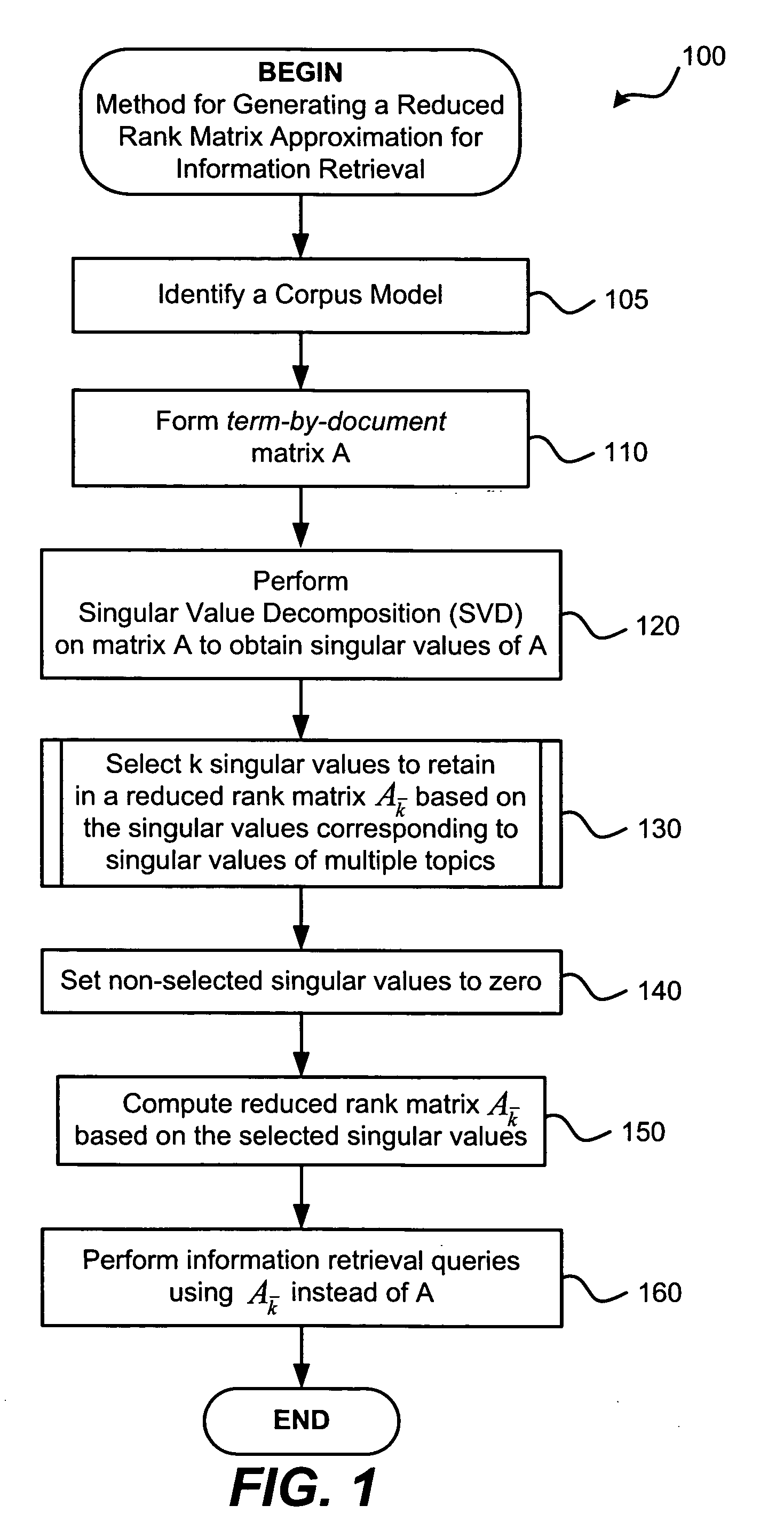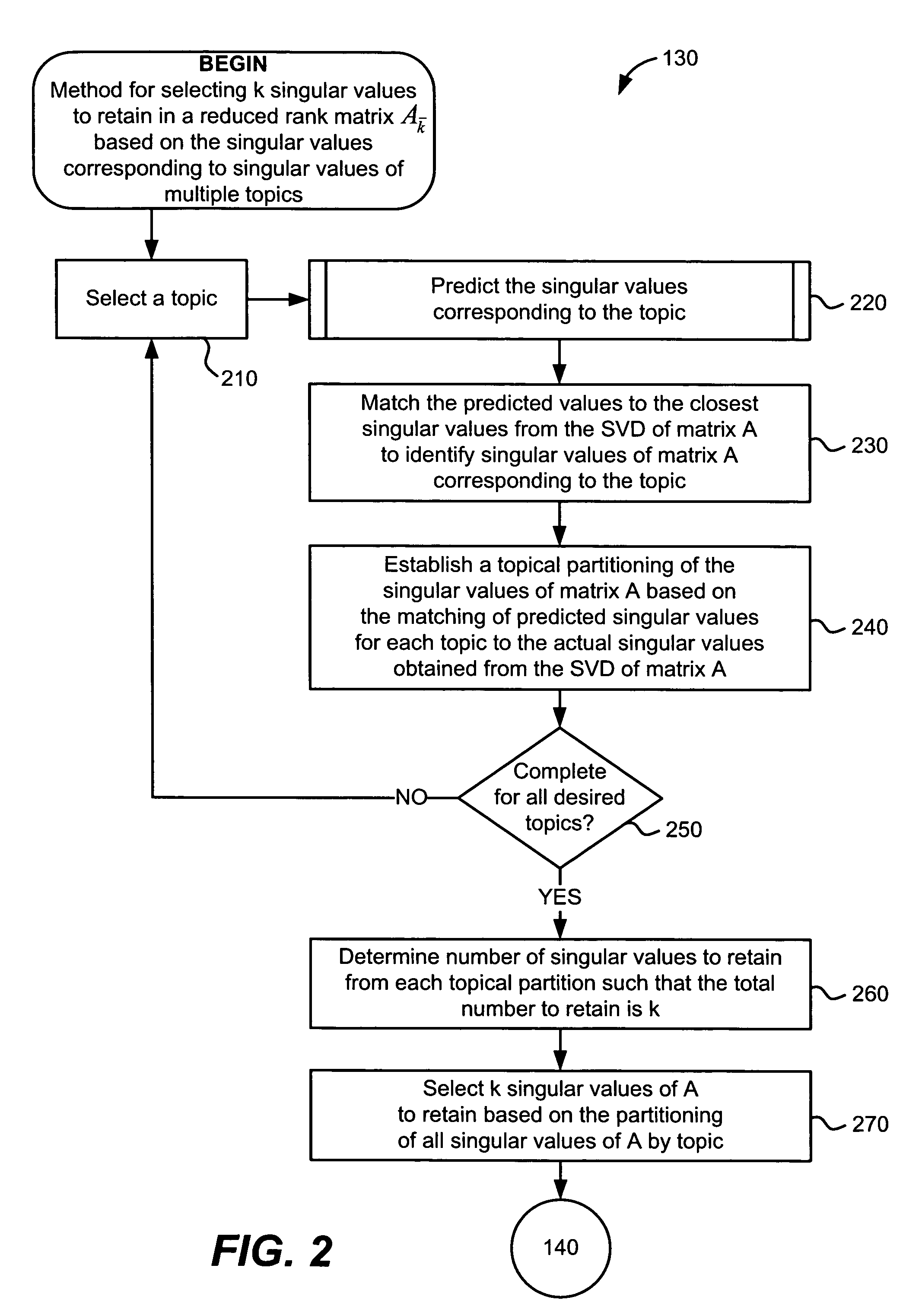Selective latent semantic indexing method for information retrieval applications
a semantic indexing and information retrieval technology, applied in the field of computer-based information retrieval systems, can solve the problems of introducing a loss of topical coverage, reducing the rank of a term-by-document matrix, and not always maintaining the coverage of all topics. , to achieve the effect of reducing or preventing the loss of topical coverage, reducing the rank of a term-by-document matrix, and giving control over the amount of each topic to cover
- Summary
- Abstract
- Description
- Claims
- Application Information
AI Technical Summary
Benefits of technology
Problems solved by technology
Method used
Image
Examples
Embodiment Construction
[0024] The inventive information retrieval method can comprise steps for selecting certain singular values to retain in a reduced rank approximation of a term-by-document indexing matrix. The selection of singular values can comprise steps for ensuring that all desired topics covered by the documents are retained after the rank reduction process. The inventive rank reduction method can ensure this retention of topical coverage by using information identifying the singular values that correspond to certain topics. For example, when selecting which singular values to retain, this information can be used to ensure that at least one singular value is retained corresponding to each desired topic.
[0025] The information identifying the singular values corresponding to certain topics can be obtained by estimating the singular values of each topic and then identifying the actual singular values of the term-by-document matrix that are closest to the estimated singular values. This process ca...
PUM
 Login to View More
Login to View More Abstract
Description
Claims
Application Information
 Login to View More
Login to View More - R&D
- Intellectual Property
- Life Sciences
- Materials
- Tech Scout
- Unparalleled Data Quality
- Higher Quality Content
- 60% Fewer Hallucinations
Browse by: Latest US Patents, China's latest patents, Technical Efficacy Thesaurus, Application Domain, Technology Topic, Popular Technical Reports.
© 2025 PatSnap. All rights reserved.Legal|Privacy policy|Modern Slavery Act Transparency Statement|Sitemap|About US| Contact US: help@patsnap.com



